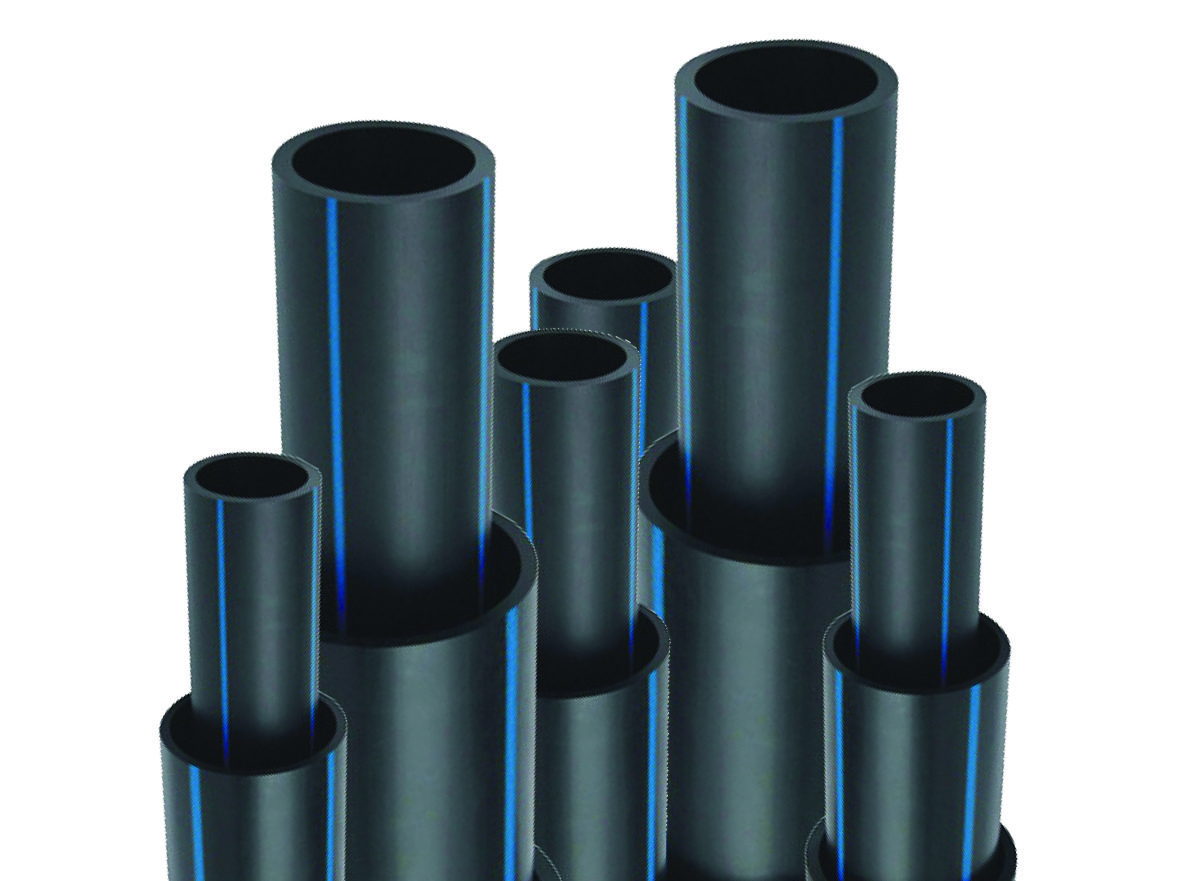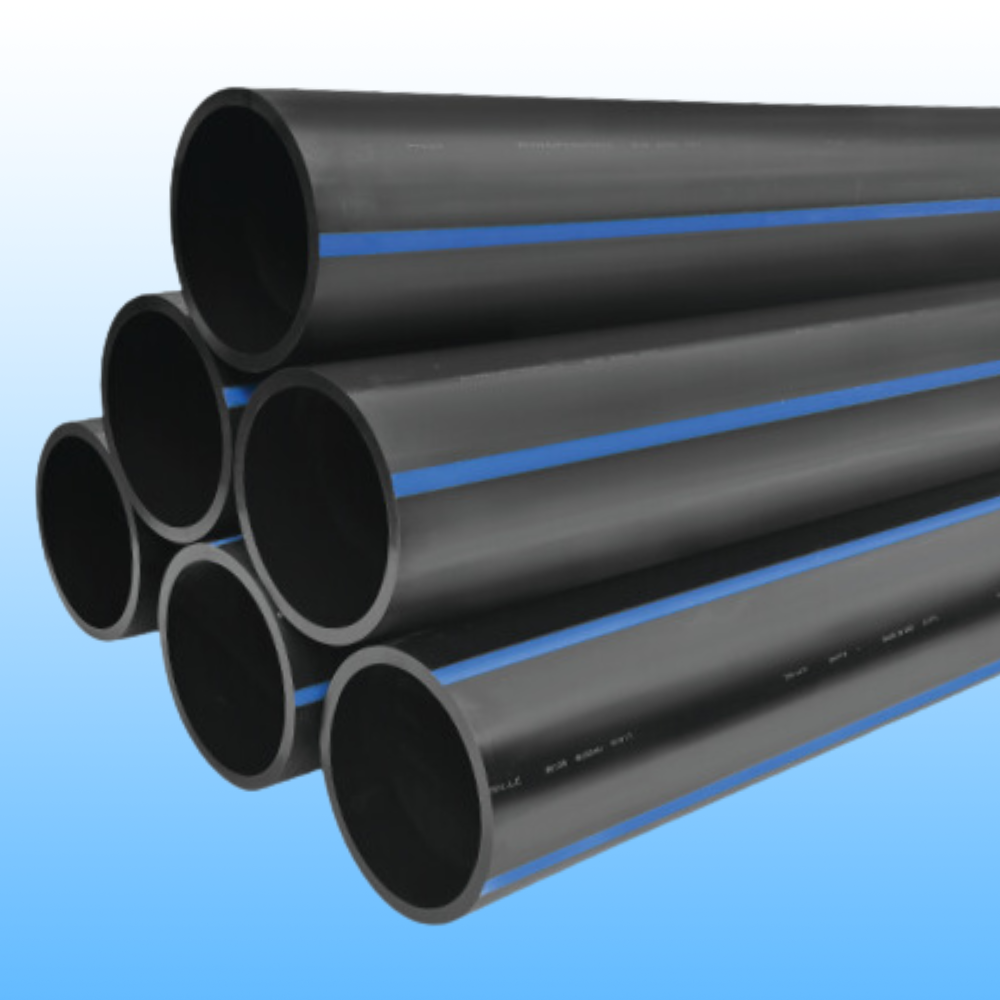In-Depth Look to hdpe pipe fittings Midland TX and Their Applications
Wiki Article
Explore the Manufacturing Refine Behind High-Quality HDPE Pipeline and Its Applications
The production process of high-grade HDPE pipelines is intricate and systematic. It begins with the selection of raw materials that improve performance. Following this, ethylene undergoes polymerization to form resin, which is then formed via extrusion. Quality assurance is critical, ensuring that the end product fulfills strict requirements. The journey of HDPE pipelines doesn't end with production. Their applications throughout different markets disclose a wider importance worth examining.Recognizing HDPE: Characteristics and Advantages

High-density polyethylene (HDPE) is a flexible thermoplastic recognized for its resilience and resistance to various ecological factors. This product exhibits outstanding tensile toughness, making it suitable for demanding applications. Its low-density framework adds to a lightweight product, helping with ease of managing and installment. HDPE also showcases remarkable resistance to chemicals, which minimizes degradation when revealed to extreme compounds.
The material's reduced wetness absorption further enhances its durability, making it ideal for usage in pipelines and tank. In addition, HDPE is resistant to ultraviolet (UV) radiation, guaranteeing that items maintain their integrity also when exposed to sunlight. Moreover, its adaptability permits for the creation of intricate forms without jeopardizing strength. The environment-friendly nature of HDPE, usually originated from recycled materials, adds to its allure, advertising lasting techniques in manufacturing. In general, these homes and advantages make HDPE a recommended selection for different commercial and customer applications.
Basic Material Choice for HDPE Manufacturing
The option of resources for HDPE production is necessary to confirm the end product satisfies the desired specifications and quality criteria. High-density polyethylene (HDPE) is mainly produced from polymerized ethylene, acquired from fossil gas such as gas or petroleum. The top quality of these feedstocks substantially affects the mechanical and thermal residential properties of the final HDPE.Ingredients additionally play a considerable duty in enhancing HDPE's performance, consisting of antioxidants, UV stabilizers, and colorants, which boost longevity and resistance to environmental elements. The selection procedure must consider not only the chemical make-up of the raw materials however likewise their handling characteristics to ensure reliable production.
The sourcing of raw products should focus on sustainability and compliance with environmental policies, as responsible methods are important in today's market. Eventually, cautious basic material option lays the foundation for creating top notch HDPE pipelines suitable for varied applications.
The Extrusion Refine: Forming HDPE Pipe
The extrusion process plays a vital duty fit HDPE pipes, starting with precise material prep work techniques that ensure optimal circulation and uniformity. Just as important is the style of the die, which directly affects the final dimensions and surface area quality of the pipeline. With each other, these aspects add substantially to the effectiveness and top quality of HDPE pipe manufacturing.Material Prep Work Strategies
Effective manufacturing of HDPE pipes starts with thorough material prep work techniques, particularly the extrusion process. Throughout this stage, high-density polyethylene resin is initial dried to remove moisture, making certain suitable circulation features. The resin is after that fed into the extruder, where it goes through home heating and melting, changing into a viscous state. This home heating procedure is very carefully managed to keep the product's integrity and efficiency. The molten HDPE is forced through a die, shaping it right into a constant pipe form. Proper temperature monitoring during extrusion is important, as it straight impacts the product's properties and the last product top quality. As soon as formed, the HDPE pipe is cooled down and reduced to defined sizes, ready for succeeding handling and applications.Die Style Importance
Accuracy in die design plays an essential duty in the extrusion procedure of HDPE pipes. The die serves as the last shaping device, directly influencing the pipeline's measurements, wall surface thickness, and surface finish. A well-designed die assurances uniform material circulation, lowering issues such as irregularities and vulnerable points. The geometry of the die have to be maximized to accommodate the details residential properties of HDPE, including its viscosity and thermal habits throughout extrusion. Furthermore, the cooling price of the material as it goes through the die can substantially influence the pipeline's architectural stability. Investing in sophisticated die technology is important for manufacturers intending to create high-grade HDPE pipelines that fulfill industry criteria and consumer assumptions.Quality Assurance Procedures in HDPE Manufacturing
Numerous elements influence the quality of HDPE pipe production, reliable quality control measures are vital to assure uniformity and reliability in the last product (American Plastics HDPE Pipe Manufacturing). Trick quality assurance methods include rigorous material evaluation, validating that the raw polyethylene meets established requirements for pureness and thickness. Throughout the extrusion process, specifications such as temperature level, pressure, and cooling time are very closely monitored to preserve dimensional accuracy and structural stabilityOn top of that, post-production testing is important; suppliers commonly perform hydrostatic examinations to examine the pipeline's toughness and resistance to stress. Aesthetic examinations for surface area issues further boost quality control. Accreditation from pertinent standards companies, like ASTM or ISO, supplies an added layer of reputation. By carrying out these extensive quality assurance measures, producers can lessen flaws, boost efficiency, and guarantee that the HDPE pipelines satisfy the certain needs of numerous applications, inevitably bring about customer contentment and rely on the item.
Applications of HDPE Pipeline Across Industries
HDPE pipelines are made use of throughout different sectors due to their longevity and adaptability. In water distribution systems, they guarantee reliable shipment, while in wastewater administration, they offer trusted options for waste transportation. Additionally, agricultural irrigation networks take advantage of HDPE's resistance to rust and flexibility, making it an ideal option for contemporary farming practices.
Water Distribution Solutions
A substantial number of markets depend on high-density polyethylene (HDPE) pipes for efficient water distribution systems. Known for their sturdiness and resistance to rust, HDPE pipelines are commonly utilized in municipal supply of water networks, farming watering, and commercial applications. Their light-weight nature helps with easy handling and installment, decreasing labor prices and time. In addition, HDPE pipes can accommodate different pressure degrees, making them suitable for both reduced and high-pressure systems. Midland TX HDPE Pipe Fittings in Stock. The read more adaptability of the product enables for smooth assimilation into existing infrastructure, decreasing the requirement for extensive excavation. Moreover, HDPE's resistance to chemical seeping guarantees that the water provided stays risk-free and clean, making it a perfect option for maintaining the high quality of safe and clean water throughout numerous industriesWastewater Monitoring Solutions
Effective water circulation systems also lead the method for innovative wastewater administration services, where high-density polyethylene (HDPE) pipelines play a considerable function. Distinguished for their longevity and resistance to rust, HDPE pipes are suitable for carrying wastewater in different setups. Their adaptability permits simple setup in complex atmospheres, reducing the need for substantial excavation. In addition, HDPE's smooth interior surface area decreases friction, boosting circulation prices and efficiency. These pipes are additionally immune to chemical leaching, guaranteeing that contaminants do not endanger the surrounding environment. Industries, municipalities, and therapy facilities progressively depend on HDPE pipelines for their reliability and long life, making them a recommended selection for modern wastewater monitoring systems. This versatility highlights the crucial importance of HDPE pipes throughout various applications.Agricultural Irrigation Networks
Agricultural watering networks profit significantly from the usage of high-density polyethylene (HDPE) pipes, which supply efficient and dependable water shipment to plants. HDPE pipelines are light-weight, making them simple to move and set up, while their adaptability permits various arrangements in varied terrains. These pipes demonstrate superb resistance to rust, chemicals, and UV radiation, making sure resilience in harsh farming environments. Additionally, their smooth indoor surface lessens rubbing loss, optimizing water flow and lowering power costs connected with pumping. The longevity of HDPE pipes, often going beyond 50 years, adds to reduce upkeep and substitute expenses. Farmers progressively rely on HDPE pipelines to boost watering performance and advertise sustainable farming methods, inevitably leading to boosted crop yields and source preservation.
Future Trends in HDPE Pipe Innovation
As the need for sustainable and effective framework grows, improvements in HDPE pipeline modern technology are positioned to change different industries. Emerging trends include the combination of wise technologies, such as sensors and IoT capacities, which assist in real-time surveillance of pipe problems, reducing maintenance costs and preventing leakages. Additionally, the growth of sophisticated production strategies, such as 3D printing, is making it possible for the production of complex, personalized pipe styles that deal with particular job needs.The emphasis on recycling and round economic climate techniques is driving the technology of HDPE pipelines made from recycled materials, enhancing sustainability. Enhanced jointing methods, such as electro-fusion and mechanical installations, are also boosting installation effectiveness and reliability. The expanding focus on ecological regulations is pushing makers to embrace greener manufacturing processes, ensuring that HDPE pipes not only fulfill sector criteria yet additionally promote an even more sustainable future for framework advancement.
Frequently Asked Inquiries
Exactly How Does HDPE Compare to Various Other Plastic Materials?
HDPE exceeds several other plastic products pertaining to sturdiness, chemical resistance, and adaptability. Its low density and high tensile strength make it ideal for different applications, often exceeding choices in both performance and durability.What Are the Ecological Effects of HDPE Manufacturing?
The environmental impacts of HDPE production include greenhouse gas exhausts, energy consumption, and potential contamination from manufacturing processes. In addition, inappropriate disposal can result in dirt and water contamination, raising concerns concerning long-lasting eco-friendly impacts.Can HDPE Pipeline Be Recycled?
Yes, HDPE pipelines can be reused. Many facilities approve made use of HDPE for processing, transforming it into brand-new items. This recycling contributes to sustainability initiatives, lowering plastic waste while conserving resources and power in the production cycle.What Is the Lifespan of HDPE Pipeline?

Just How Do Temperature Variants Impact HDPE Pipe Efficiency?
Temperature level variations substantially affect HDPE pipe efficiency, influencing adaptability and toughness. High temperatures can cause softening, while low temperatures might create brittleness, inevitably influencing the pipe's resilience and viability for various applications in varied atmospheres.Report this wiki page